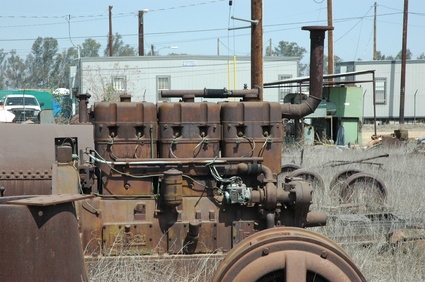
Allowing rust to build inside engines will adversely affect the engine's ability to run properly. Rust buildup creates friction in the engine in places that are lubricated, causing excessive heat and often breakage. Rust also eats away at metallic surfaces and can create breaks in pipes, hose housings and belt bearings, making the vehicle inoperable. Using wire brushes, rust stabilizers and at times phosphoric acid will eliminate rust, allowing the engine to run more efficiently and safely.
Use the wire brush to scrape at rust deposits around the engine. Rub the bristle side vigorously up and down over battery contacts, smooth flat areas of the engine, pipes and sockets. Scrape the sides of the engine chassis, the underside of the hood and the engine mounts. Avoid contact with belts, hoses and other non-metal pieces.
Apply a liberal amount of rust stabilizer to a clean dry rag (if the rust stabilizer purchased is in squirt bottle form, apply without a rag). Use the rag to apply the rust stabilizer to all the engine parts, even if there is no rust buildup. Keep applying until the engine has a light coat of the stabilizer and let sit as long as two hours to allow the stabilizer to break down the rust and protect the other areas.
Dump the bottle of phosphoric acid into the bucket and add an equal part of water. Pour the solution of acid and water into the spray bottle (without touching it) and close the spray bottle firmly to avoid spillage. Spray a very light coating (no more than two pumps) of the solution over the rust-affected areas, avoiding non-rusted areas as much as possible to destroy the rust.